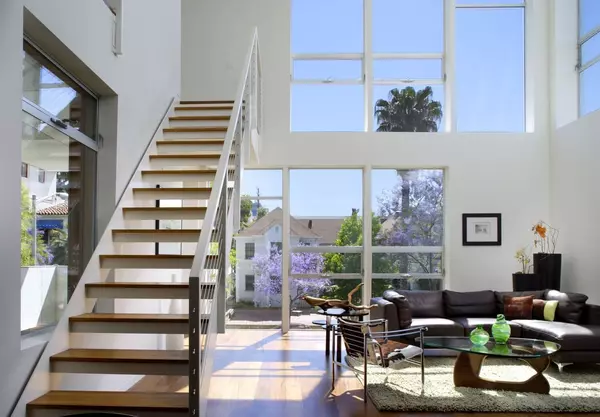Heat-Resilient Design: Investing in Properties Built for Hotter Futures
As global temperatures rise and heat waves become more frequent, real estate investors face a changing climate that affects both risk and return. Buildings designed for past weather conditions are already showing higher energy costs, more frequent maintenance issues, and lower tenant comfort. In contrast, properties built with heat-resilient design and modern cooling technologies can reduce long-term expenses, maintain asset value, and attract stronger tenant demand.
Passive Strategies That Reduce Cooling Demand
A building’s envelope, or the layer that protects the interior, including its walls, windows, and roof, is the first defence against extreme heat. High-performance insulation, airtight construction, and continuous thermal barriers prevent outdoor heat from entering and keep cool air inside. Passive design features such as building orientation, deep overhangs, and cross-ventilation can lower indoor temperatures naturally, reducing the need for mechanical cooling. Materials with thermal mass, such as concrete or brick, absorb heat during the day and release it at night, keeping interior temperatures more stable. These features not only cut energy use but also extend the lifespan of HVAC systems, reducing both capital and operating costs over time.
Glazing, Shading, and Façade Innovation
Windows are a common weak point in heat management, but newer technologies have transformed their performance. Modern glazing with low solar heat gain coefficients and spectrally selective coatings lets in light while keeping out unwanted heat. Double- and triple-pane windows offer better insulation and noise reduction. Exterior shading systems such as louvres, brise-soleil, or even strategically planted vegetation block sunlight before it reaches the glass. Automated façades and responsive shading systems can adjust in real time to changing weather, improving comfort and efficiency. For investors, these improvements lead to happier tenants, fewer temperature complaints, and greater long-term appeal.
Efficient Cooling Systems and Decarbonization
Traditional air conditioning is energy-intensive and increasingly costly as fuel prices fluctuate. Newer systems like variable refrigerant flow (VRF) technology, high-efficiency heat pumps, and dedicated outdoor air systems separate ventilation from cooling to achieve higher performance. Radiant cooling, which uses chilled ceilings or floors, can maintain comfort at warmer air temperatures while using less energy. Pairing these systems with on-site renewables, such as solar panels, and electrification strategies reduces dependency on fossil fuels and aligns assets with tightening emissions standards. The result is lower energy bills, smaller carbon footprints, and compliance with evolving building performance regulations.
Cool Roofs, Green Roofs, and Smart Materials
The roof plays a major role in heat management. Cool roof coatings reflect sunlight, reducing the roof’s surface temperature and the amount of heat transferred indoors. Green roofs add an insulating layer, absorb rainwater, and cool the surrounding air through evapotranspiration, while also extending the lifespan of the roof membrane. More advanced technologies, such as phase-change materials embedded in walls or ceilings, absorb excess heat during peak hours and release it later, helping maintain stable indoor temperatures. These design choices improve comfort and protect the building structure, while lowering long-term maintenance costs.
Smart Controls and Occupant Comfort
Modern heat-resilient buildings rely on intelligent systems to stay efficient. Building automation systems monitor temperature, humidity, and occupancy to adjust cooling and ventilation in real time. Demand-response systems can temporarily lower power use during peak grid periods without sacrificing comfort.
When tenants have access to local controls and clear communication about how temperature is managed, satisfaction improves and complaints drop. Additionally, smart controls lead to lower operating costs, earlier detection of maintenance issues, and stronger documentation of energy performance for lenders and potential buyers.
Urban-Scale Site Design and Microclimate
A building’s surroundings also influence its heat resilience. While different locations can make this difficult, site planning that incorporates trees, reflective pavements, and water features helps cool the local environment and reduces the urban heat island effect. Strategic building orientation and spacing can improve natural airflow and support passive cooling methods. These design elements enhance both livability and the broader community appeal.
The Business Case for Heat-Resilient Investment
Investing in heat-resilient design may add modest upfront cost, but it pays off through lower operating expenses, reduced equipment wear, and better tenant retention. Buildings that use less energy are less exposed to volatile utility rates, while efficient cooling systems and durable materials minimize unplanned maintenance. Many insurers and lenders now recognize resilience features and may offer better terms for properties that demonstrate reduced climate risk. When selling, many of these features may increase desirability for a quicker sale. Over time, these advantages help investors secure stable income streams and higher resale values.
Design Choices That Protect Value
As temperatures climb, resilience will separate assets that endure from those that decline. Investing in heat-ready design future-proofs portfolios against the realities of a changing climate and positioning for strength in the markets ahead.
Recent Posts










